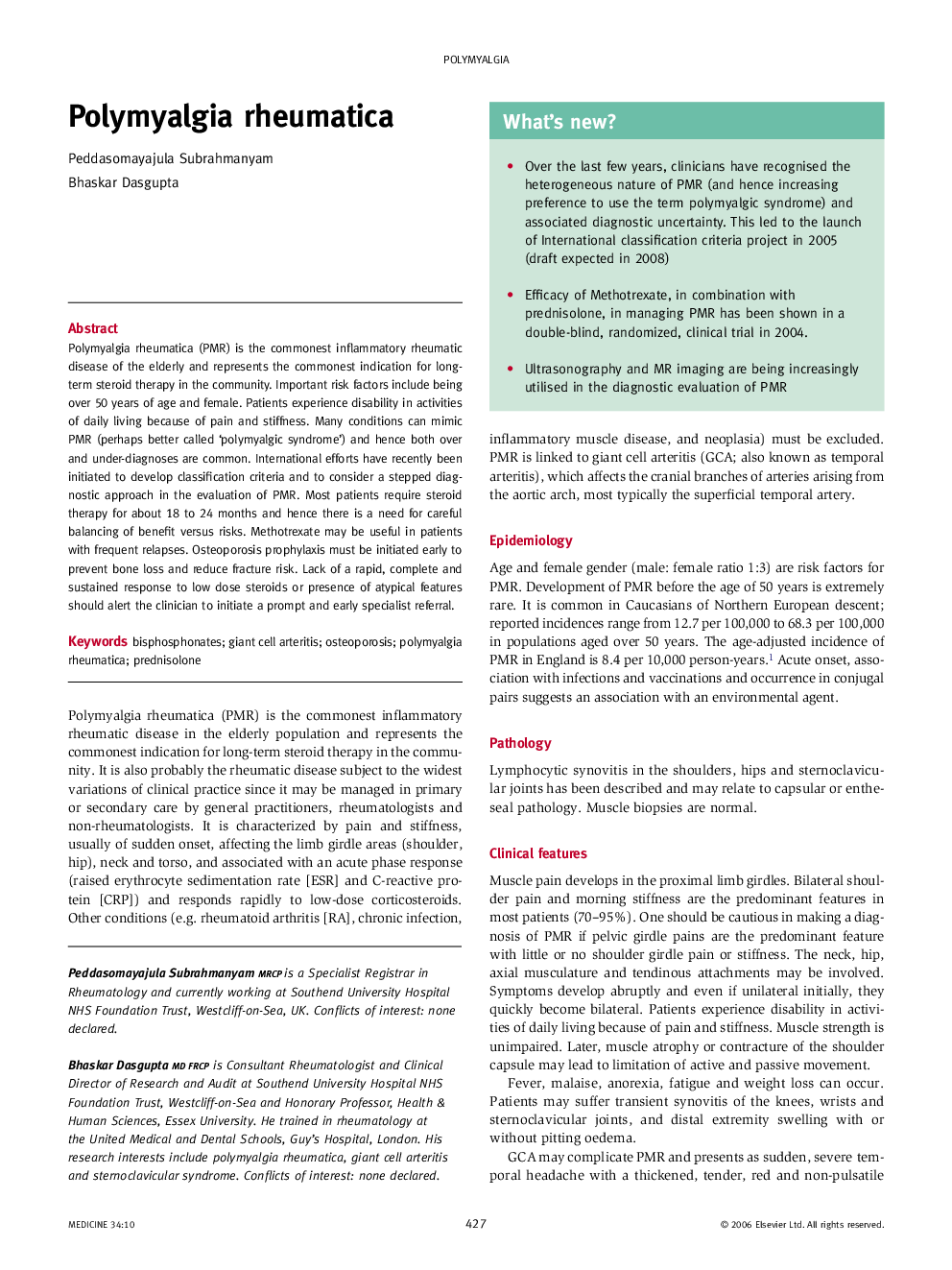| Article ID | Journal | Published Year | Pages | File Type |
|---|---|---|---|---|
| 3804632 | Medicine | 2006 | 4 Pages |
Abstract
Polymyalgia rheumatica (PMR) is the commonest inflammatory rheumatic disease of the elderly and represents the commonest indication for long-term steroid therapy in the community. Important risk factors include being over 50 years of age and female. Patients experience disability in activities of daily living because of pain and stiffness. Many conditions can mimic PMR (perhaps better called 'polymyalgic syndrome') and hence both over and under-diagnoses are common. International efforts have recently been initiated to develop classification criteria and to consider a stepped diagnostic approach in the evaluation of PMR. Most patients require steroid therapy for about 18 to 24 months and hence there is a need for careful balancing of benefit versus risks. Methotrexate may be useful in patients with frequent relapses. Osteoporosis prophylaxis must be initiated early to prevent bone loss and reduce fracture risk. Lack of a rapid, complete and sustained response to low dose steroids or presence of atypical features should alert the clinician to initiate a prompt and early specialist referral.
Related Topics
Health Sciences
Medicine and Dentistry
Medicine and Dentistry (General)
Authors
Peddasomayajula Subrahmanyam, Bhaskar Dasgupta,
